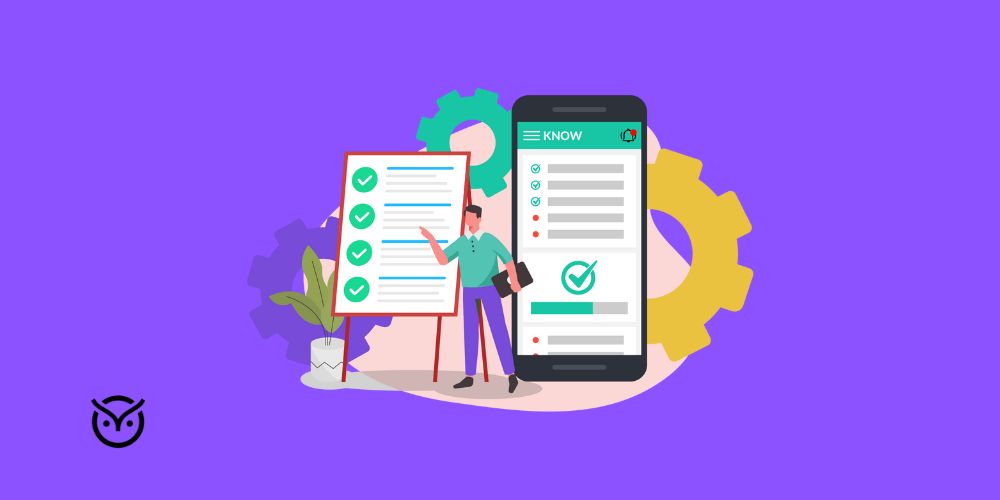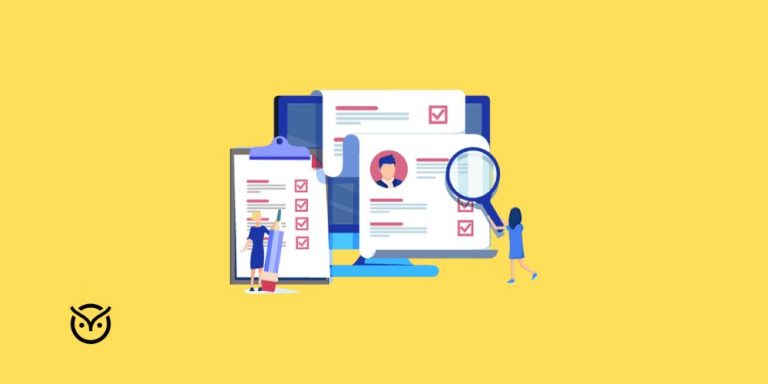Common Mistakes in Training a New Employee and How to Avoid Them

TL;DR
- Training a new employee = faster productivity + fewer mistakes.
- Skipping structure or culture in a new hire training program leads to failure.
- Use a clear new hire training plan with timelines and feedback.
- All new staff should receive training on culture and tasks together.
- A training checklist keeps things consistent.
Starting a new job should feel exciting, but often it feels overwhelming instead. Many companies stumble when it comes to training a new employee. Managers rush through orientation, skip essentials or assume “shadowing” will do the trick. The result? Confused hires, wasted time, and sometimes even higher turnover. Imagine a new employee who hasn’t been through CI training yet being asked to figure things out on the fly.
The good news? Training doesn’t have to be a guessing game. With the right approach like following a new hire training program, using a training a new employee checklist, and building a new hire training plan, organizations can make the transition smooth. In this guide, you’ll learn the biggest mistakes companies make, how to avoid them, and proven tips for training new employees. Whether you’re being asked to train new employees for the first time or improve an existing system, this blog will help you create a plan that works.
Why Effective Training Matters for New Employees

Why Effective Training Matters for New Employees
- A good training program is more than just giving out a handbook.
- It reduces employee turnover, increases productivity, and builds loyalty.
- Companies that invest in structured training earn 218% more income per employee compared to those that don’t.
- Poor training leads to avoidable mistakes, compliance errors, and more time spent fixing issues later.
Common Training Mistakes and Their Impact
- Skipping structured onboarding causes confusion and compliance risks.
- Rushed or inconsistent training often requires re-training later.
- Without planning, organizations waste time correcting errors instead of teaching skills.
What Good Training Should Include
- Balance both task-based training and cultural orientation.
- Every new hire should understand the company’s mission, values, and communication style.
- Blending job-specific tasks with cultural alignment helps new employees adapt faster.
Who Should Be Involved in Training?
- Training isn’t just HR or a manager’s responsibility.
- Effective training programs involve:
- Peer shadowing
- Mentorship
- Digital learning tools
- Peer shadowing
- Shared responsibility leads to better engagement and knowledge retention.
Adapting to Different Learning Speeds
- A good plan is flexible enough for both beginners and experienced hires.
- Tailor training timelines based on:
- Background knowledge
- Role complexity
- Background knowledge
- Don’t improvise; structure matters more than speed.
Long-Term Benefits of Structured Training
- Saves time and effort in the long run.
- Aligns with modern recruitment methods like:
- AI hiring insights
- Smarter onboarding tools
- Proven recruiting techniques
- AI hiring insights
- Sets up employees for success from day one.
10 Common Mistakes in Training a New Employee (and Fixes)

1. Rushing Through Onboarding
The mistake: Many companies view onboarding as a one-day event. They hand out logins, share policies, and expect new hires to figure the rest out. Without structured support, it can take 8-12 months for employees to reach full productivity.
The fix: Extend onboarding over several weeks with a new hire training schedule that introduces tasks step by step.
2. Focusing Only on Tasks, Ignoring Culture
The mistake: Employers often believe training a new employee means just teaching job duties. They forget the cultural pieces such as values, teamwork, and communication styles. When this happens, hires may do tasks well but struggle to fit in.
The fix: Blend culture and task-based learning. All new staff should receive training on company values, mission, and behavioral expectations. Even a short workshop on culture can improve engagement and retention.
3. One-Size-Fits-All Training
The mistake: Companies sometimes design one generic new hire training program for everyone. But not all employees have the same background. A new employee who hasn’t been through CI training yet may need compliance basics, while someone with prior experience might need advanced modules.
The fix: Personalize learning. Create flexible tracks within your new hire training plan. For example, offer beginner modules for how to train an employee with no experience and advanced ones for hires with prior knowledge.
4. Leaving Training to Managers Alone
The mistake: Some businesses assume on-the-job training is the responsibility of management alone. The problem? Managers are often busy and may rush through key steps.
The fix: Spread the responsibility. Pair new hires with mentors or “buddies.” Encourage peer-to-peer learning. This not only lightens management’s load but also helps employees feel more connected to their team.
5. Not Using a Training a New Employee Checklist
The mistake: Without a structured checklist, important steps get missed like safety protocols, compliance training or system walkthroughs. This can lead to confusion or even legal risks.
The fix: Build a training a new employee checklist that covers tasks, culture, compliance, and role-specific skills. A simple document ensures consistency and reduces errors when you train a new employee.
6. No Clear Timeline for Training
The mistake: Some companies aren’t sure how long employee training should be or how long training for a job should take. This leads to rushed learning for complex roles or unnecessarily long training for simpler jobs.
The fix: Align timelines with role complexity. For example, customer service hires may be ready in 2–3 weeks, while technical roles could take months. Always set milestones in your new hire training program to measure progress.
7. Ignoring Feedback from New Hires
The mistake: Employees often know when a new employee needs extra training, but companies don’t ask. This results in repeated mistakes, frustration, and sometimes resignations.
The fix: Collect feedback early and often. Simple surveys or check-ins help identify gaps. If a hire struggles, adjust the new hire training plan instead of blaming the individual.
8. Forgetting Remote and Hybrid Needs
The mistake: Many organizations still rely on outdated in-person methods and fail to adapt to remote hires. With digital-first methods of recruitment, remote onboarding has become the standard.
The fix: Provide digital resources like video tutorials, e-learning modules, and virtual mentorship. Clear communication is key. Remote employees especially benefit from structured tools like a new hire training schedule they can follow independently.
9. Overloading with Information
The mistake: Companies sometimes cram everything into the first week. This “firehose” approach makes new hires forget more than they learn.
The fix: Use microlearning. Break training into smaller, manageable sessions. For instance, spread compliance training over several days rather than one long session. This is especially effective when creating a training plan for new employees with no prior experience.
10. No System to Measure Success
The mistake: Training ends, and managers assume it worked. But without metrics, there’s no way to know. Performance dips, mistakes increase, and leadership wonders what went wrong.
The fix: Track results. Use KPIs like time to productivity, error reduction, and retention rates. Even simple methods like tracking how quickly a new employee who hasn’t been through CI training yet adapts can reveal gaps. This helps refine tips for training new employees going forward.
Why Avoiding These Mistakes Matters
Each of these mistakes may look small on paper, but together they create disengaged, unproductive hires. According to Gallup, only 12% of employees strongly agree their company does a great job onboarding. That leaves 88% of employees feeling uncertain or unsupported. Fixing these errors makes training smoother and improves morale, reduces turnover, and ultimately boosts business performance.
Best Practices for Effective New Employee Training

Training a new employee right isn’t just about avoiding mistakes. It’s about setting up a repeatable system that works for every hire, whether it’s a new employee who hasn’t been through CI training yet, someone with no experience at all, or an experienced hire moving into a new culture. Below are the proven best practices that help companies build smarter, stronger onboarding programs.
1. Start with a Clear New Hire Training Plan
Don’t wait until day one to figure out how to train new hires. The most effective companies build structured new hire training programs that outline goals, milestones, and responsibilities before an employee even walks in the door.
Your plan should include:
- A role-specific roadmap (what the employee needs to master and when).
- A new hire training schedule with realistic timeframes.
- Learning materials tailored for different levels (e.g., how to train an employee with no experience).
Organizations with strong onboarding improve new hire retention by 82%. That alone shows the value of creating a structured plan rather than improvising.
2. Use a Training a New Employee Checklist
A checklist may sound basic, but it prevents critical oversights. Many companies forget key elements like compliance, IT security, or introductions to cross-functional teams. By keeping a training a new employee checklist, you ensure every hire gets the same complete experience.
Checklists should include:
- Tech setup (logins, accounts, devices).
- Mandatory compliance (for a new employee who hasn’t been through CI training yet).
- Culture immersion (team meet-and-greets, values sessions).
- Task-specific modules tailored to the role.
The bonus? It makes scaling onboarding easier when hiring multiple employees at once.
3. Blend Culture and Skill Development
One of the biggest debates in training is whether to prioritize tasks or culture. The answer is both. All new staff should receive training on company values while also mastering their day-to-day tasks.
For example:
- Customer-facing employees should learn the company tone and service culture, not just scripts.
- Engineers should absorb coding standards alongside CI training modules.
- Even employees who say a new employee needs extra training often benefit from culture-focused mentoring and not just skill drills.
This balance makes employees feel part of something larger than their to-do list.
4. Offer Different Learning Styles
Not everyone learns the same way. Some employees thrive on shadowing, while others need written guides or e-learning. To train a new employee effectively, combine:
- Hands-on shadowing.
- Video or e-learning modules.
- Interactive quizzes.
- One-on-one mentoring.
This mix works especially well when creating a training plan for new employees with no prior background. This makes sure no one falls behind.
5. Set Clear Training Timelines
Employees often wonder how long should employee training be or how long does training for a job take. Without clarity, frustration builds. That’s why clear timelines are essential.
- Entry-level roles may need 2–3 weeks of structured onboarding.
- Technical roles may require 2–3 months.
- Leadership or compliance-heavy positions could stretch beyond 6 months.
What matters is that expectations are set up front and revisited regularly. This also helps when being asked to train new employees. Managers know how much time to dedicate instead of guessing.
6. Use Feedback as a Training Tool
Training is not one-way. Employees should feel comfortable saying when they need more help. If a new employee needs extra training, treat it as useful feedback, not a weakness.
You can:
- Run weekly check-ins.
- Use anonymous surveys.
- Encourage open dialogue between managers and peers.
This feedback loop makes it easier to refine your new hire training program and continuously improve.
7. Involve the Whole Team
As mentioned earlier, on-the-job training is the responsibility of management alone, but that’s outdated thinking. A collaborative approach works better.
- Assign peer buddies to guide hires.
- Rotate trainers to give different perspectives.
- Encourage senior employees to share real-life examples.
This way, new hires feel supported by the entire team, not just their direct manager.
8. Build Flexibility for Remote and Hybrid Hires
With AI hiring trends reshaping the workforce and bringing in talent from anywhere, onboarding is no longer bound to an office. That means training must adapt.
Best practices for remote/hybrid training:
- Digital-first onboarding kits.
- Scheduled virtual check-ins.
- A clear new hire training schedule that employees can follow on their own.
This makes sure remote hires don’t feel left out.
9. Encourage Continuous Learning Beyond Onboarding
Training doesn’t end after 30 or 60 days. Employees stay motivated when they have ongoing opportunities to grow. Think of training as a career-long journey, and here is how you can keep the momentum going:
- Monthly learning sessions.
- Cross-training opportunities.
- Leadership pathways for high performers.
- Sharing recruiting tips for finding better candidates so employees understand that hiring quality impacts everyone.
This continuous learning culture keeps employees motivated long after their first day.
10. Measure Success and Adjust
Even the best-designed training can fail without evaluation. Track KPIs such as:
- Speed to productivity.
- Employee confidence levels.
- Turnover within the first year.
Organizations with strong onboarding improve new hire productivity by over 70%. That’s proof that training is a measurable driver of business performance.
Conclusion
Training a new employee goes beyond a first-day checklist. It builds confidence, shapes culture, and creates long-term value. When companies rush or skip steps, they end up with confusion, turnover, and lost productivity.
The fix is straightforward: use a new hire training plan, build in feedback, balance tasks with culture, and support every hire, whether they’re a new employee who hasn’t been through CI training yet or someone bringing experience but needing cultural alignment.
FAQs
Quick answers you can scan and expand.






